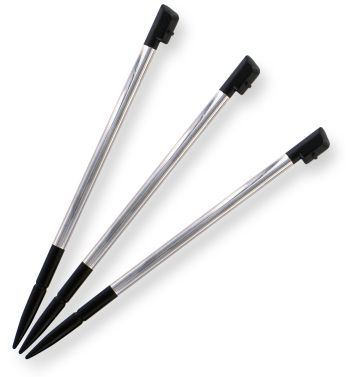 Loading...
Loading...
 Loading...
Loading...

There has long been a debate about the benefits of capacitive displays versus the traditional touch screen displays. Of course there are definite pros and cons for each but there really must be a middle ground between the two. Hopefully that is exactly what HTC is going to achieve by creating a stylus that is geared specifically to capacitive displays.
Before getting into the exciting details of what exactly HTC is getting up to, revisiting the history of touch screen technology is perhaps in order.
When touch screens first arrived on the cell phone scene many eons ago, they were largely controlled by a magic wand commonly referred to as a stylus. These styli were slightly difficult to operate, because although they were modelled on the traditional design of a pen, they differed considerably when it came to size. There were styli that were too large, resembling fat sausages than sleek pens, or the ones that were more akin to toothpicks. Of course, the toothpick variety was at a later stage, since stowing away styli in the phones became an important size constraint. These kinds of touch screens use technology known as resistive touch screens.
Then of course the Apple iPhone came out, taking the mobile market by storm. The iPhone was popular because it was a smartphone that was aimed at people who were not necessarily technologically enthralled. Therefore the average, everyday user found the iPhone delightful; in addition to the more tech-savvy computer programmer. The charm of the iPhone lay in its deceptively easy interface – no more fiddly styli, just use God-given digits. Pure brilliance; all the more brilliant because of the sheer simplicity of the idea.
The iPhones used a technology known as capacitive displays. Capacitive touch screens are engineered to allow the light touch of a finger to dictate commands. The buttons on screen are larger and the algorithm recording input allows for slight deviation from accuracy. Capacitive displays are not intended for styli and their pinpoint accuracy. They also have a tendency to last longer when compared to resistive touch screens. Combining that facet with the easier interface, capacitive touch screens are clearly the touch screen of the future. However the inaccuracy can be cumbersome, and sometimes a stylus is much more convenient for certain tasks.
HTC has filed a patent for capacitive styli that will perhaps be the bridge between the technologies and contain the best of both. There was an attempt earlier to create a mechanical device that could mimic a human finger, however that project did not meet with a great deal of success.
The new design will perhaps have a magnetically charged tip, and will not require any modifications to the traditional technology of the capacitive display. Possibly this innovation will signal the revival of the stylus, even though the iPhone practically wiped it off the map.
Read more about HTC’s patent at the Engadget site here. There will definitely be more news to come, and hopefully there will be an interesting new technology for mobile phones.